Business Research Assignment: SynergiesBetween Lean & Resilient Supply-Chain Practices
Question
Task: Prepare a business research assignmenton the topic “Conflicts and synergies between lean and resilient supply chain strategies”.
Answer
1. Introduction
1.1 Background
With advancement of technology and increased globalisation, organisations have implemented new business paradigms, that assumes a strict selection associated with core and non-core business actions, such as cutting expenses and mitigating waste in supply-chain processes. The real picture deals with companies facing challenges in terms of raising vulnerability associated with delays and potential disruptions in supply chain.
While lean strategy helps organisations to mitigate unnecessary business expenses along with assuring waste minimisation from supply-chain, it also is subjected towards reducing resilience of the supply-chain in businesses (De Moura and Botter, 2017, p. 875). Therefore, it becomes important to create and assess trade-off between potential cost savings, that is derived through lean strategic approach along with resilience. This research deals with analysing and illustrating conflicts along with potential synergies between resilient and lean form of supply-chain strategic approaches in business environment.
1.2 Research problem
Supply-chain in organisation assures to fulfil demand of the stakeholders while deriving potential consumer value and improving business responsiveness. However, the issue present in supply-chain can directly influence the financial assets of an organisation and their brand reputation in overall marketing attributes. Supply-chain can be potentially disrupted through natural disasters, terrorist attacks and epidemics. It is essential to note that potential cyber-attack in organisations can lead to hack of potential data and disrupt supply-chain in organisations.
For minimisation of waste management through supply-chains, lean management paradigm has been developed at “Toyota Motor Corporation” that involved minimum devices, materials and working time that are extremely essential for production purposes (Ponomarov and Holcomb, 2009, p.124).
Supply-chain resilience is a potentially emerging term, which relates to amount of risk along with vulnerability of a business organisation. Resilience comprise of a supply-chain’s capability towards reacting to negative influences that are caused through disruptions, occurring at a given moment for maintaining objectives of the supply-chain. This research deals with examining any form of synergy present between lean and resilient supply-chain practices, which can overall help in progressing with supply-chain performance in organisational standards.
1.3 Research Scope and significance
This research ensures a suitable opportunity to understand Nestlé’s supply-chain activities in the Australian market. It helps in understanding the differences between lean and resilient supply-chain activities while involving different types of data and implementing a suitable methodology for delivering best possible research outcomes. It examines and analyses possible synergies along with potential trade-offs in terms of incorporating operational resilience as well as lean strategies for mitigating performance loss upon potential disruption. This research marks its significance towards understanding comparison between resilient and lean strategies and their influences on performance objectives of Nestle, such as potential quality, cost, service rate, and speed as well as business flexibility (Woods, 2006, p. 30). It also potentially considers proper performance metrics, such as consumer satisfaction level and stakeholder association aspects association with supply-chain strategies in the business. Therefore major significance of this study involves incorporating a practical standard of bringing the research for addressing the issue than previous studies conducted on similar research context.
1.4 Research Purpose
The aim of this research is to analyse any synergy present between lean as well as resilient supply-chain practices, which can help in progressing with overall supply-chain performance of an organisation.
1.5 Research Questions
Q. Is there any synergy present between lean and resilient supply-chain practices, which can help in improving the supply-chain performance in an organisation?
1.6 Assumptions and Limitations
Like other researches, this research is also subjected towards potential limitations. Firstly, due to on-going pandemic period of COVID-19 situation this research has been limited to time constraints. The period allotted has been 9 weeks, but delay has been caused due to unavailability of potential research resources on time. Apart from this, only Nestle, Australia has been involved in the research that limits the formulation of research purpose.
2. Literature Review
2.1 Clarity of problem
For surviving in a risky business environment, it becomes important for business organisations to comprise of a potential supply-chain management as poorly handled form of disruptions associated with supply-chain can lead to costly delays and cause low service standards and high expenses. Since many years, cost savings comprise of an upper hand along with lean strategy that assumes zero inventories, has been one of the most committed management paradigm (Ivanovet al. 2014, p.2154).Resilience on the other side helps organisation to respond towards various supply-chain risks along with vulnerabilities in business environment. Normally, there comprise of two kinds of uncertainty related with demand and supply side of supply-chain process within organisational standards. First is “Predictable or low uncertainty”, that involves functional items and products, which potentially satisfy basic requirements with high standards, related to competition leading to low profit margins in organisation (Talebet al. 2019, p. 5). Secondly, “Unpredictable or high uncertainty”, involves stable form of supply-processes, that are known as ‘innovative items’, comprising of much higher profitability margins and consisting of higher standards of product variation (Maslaricet al. 2013).
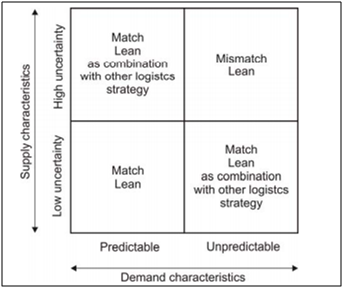
Figure 2.1: Lean Logistics implementation in association with uncertainty
(Source: Maslaricet al. 2013)
The above figure illustrates lean logistics applicability in terms of its association with uncertainty aspects. Area, whichis illustrated in lower left corner, assumes a low form of demand as well as potential supply uncertainty.It is critical to note that due to scale along with complexity associated with supply-chain it becomes difficult for companies to incorporate lean strategy in business. Low expenses can be realised through eradicating non-value-added form of actions, striving towards scale economies while optimising techniques along with potential production (Maslaricet al. 2013, p. 230). Area from upper-left corner in the graph marks an assumption that potential supply-chain follow combination of lean along with other form of logistics strategy like potential inventory pooling. In this scenario, supply-chains further assume potential safety stocks but lower in terms, which can be realised by their sharing between comparable organisations in potential supply-chain. Lower right corner of the graph represents that potential supply-chains that concentrates on properly balancing flexibility along assures postponement strategy. Finally, upper-right corner assures supply-chains in which potential strategy should not be based on lean-strategy because of high demand as well as supply uncertainty aspects in market. This figure helps in understanding relationships between different levels of lean strategy applicability along with uncertainty in supply-chain of an organisation.
Risk associated with supplies comprise of a potential negative form of impact, which might rise from an adverse circumstance in an organisation. In terms of supply-chain, adverse circumstances are subjected towards interruption associated with logistics operations. Potential risks further arise from proper uncertainty associated with future events and every operation engages a risk, which needs to be managed through the organisation (Kovács and Falagara, 2021, p. 49). There are wide ranges of events, which are further associated with affecting supply-chain operations within a business context. These range from environmental to inter and intra-organisational factors. From potential “logistics, point of view supply-chain”, it is critical to understand that member’s interaction can result in very complex-behaviour primarily in conditions associated with growing uncertainty standards, where primary “drivers of uncertainty” consist of new and different business models, which have been applied for increasing logistics efficiency along with competitiveness.
2.2 Operational resilient capabilities and core functions
According to Ponomarov, (2009), resilience comprise of an adaptive ability towards preparing for potential unexpected form of events along with responding as well as recovering from various disruptions while assuring sustaining business operations. Organisations, which possess good strategic operational resilience form of capabilities, tend towards preventing or mitigating disruptions so that condition to, negatively influence operations is further minimised. Operational resilience further results from proactive along with reactive capabilities of an organisation in terms of potentially managing unanticipated form of occurring. In this context, business assures sustaining potential operations in terms of adapting to changes in business environment. According to (Birkieet al, 2014, p. 40), there lies five form of core functions that is associated with operational resilience. It comprise of “sense, build, re-enhance, potentially re-configure and sustain”, for enhancing proactive approaches.
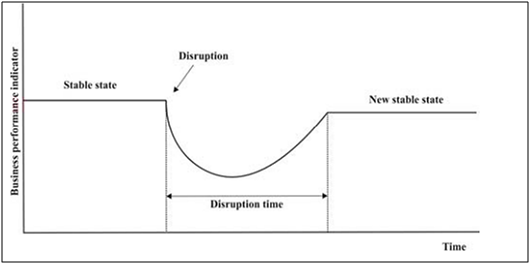
Figure 2.2: System Resilience
(Source: Maslaricet al. 2013)
Operational resilience enhances a series of practices, which can help an organisation to detect, analyse, learn as well as potentially establish anticipative expertise based approach on existing experiences along with prevailing form of situations. Sense helps in analysing circumstances while build assures proactively developing relevant form of capabilities that can be utilised in reactive mode. A re-configuring addresses potential issue associated with implementing changes enhancing organisational flexibility in an organisation. Re-enhance approach encompasses potential actions in terms of recovering from disruptions while exploiting different scopes, which comes with disruptive incident. Finally, sustaining approach helps in keeping delivery of value-based performance towards consumers and stakeholders within business standards.
2.3 Lean in SCM
Lean production comprise of an integrated form of socio-technical system with a primary objective towards mitigating waste through concurrently reducing variability associated with supplies, internal processes along with consumers. It relies on potentially guiding principles, which concentrates mainly on people and then on different kind of procedures along with long-term thinking.
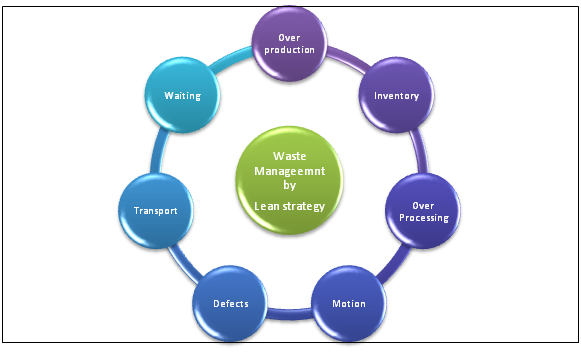
Figure 2.3: Lean strategy helps to eliminate different types of waste
(Source: Researcher)
Therefore, it properly covers every level along with functions associated with an organisation. There are numerous forms of practices, which can be incorporated through a firm that intends towards pursuing lean paradigm, further depending on their potential operating context. Lean practice bundles comprise of active engagement of consumers and their collaboration, prolonged association with suppliers along with potential form lean purchasing. It also comprise of internal organisational factors such as “Human Resource Managements”, and total-quality management along with overall productive maintenance in an organisation (Kovács and Falagara, 2021, p. 48)
Definitions
Lean is a potential management paradigm and strategy that has been developed at “Toyota Production Systems (TPS)” in the year 1988. It has continuously evolved and popularised as potential lean thinking in organisational standards. There are apparently five different principles associated with lean thinking. It involves the following aspects.
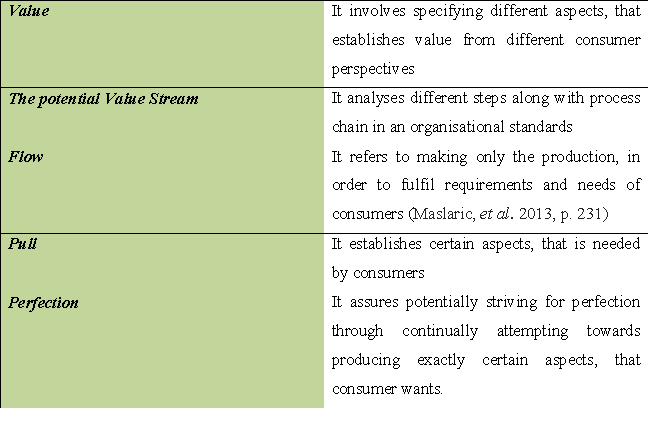
Primary goal associated with lean strategy is to eliminate waste, which is anything except minimum amount of devices, parts along with materials, as well as potential working time, which are necessary in terms of production.
2.4 Synthesis of Review
It is significant to note that a resilient enterprise can be further built through establishing redundancies throughout supply-chain management. The organisation needs to hold extra from of inventory while maintaining low capacity utilisation and consisting on many suppliers. Redundancy further refers towards investment in capital as well as capacity for helping organisations towards responding as well as continuing operation after major disruptions like buffer inventory (Ruiz-Benítezet al. 2018, p. 191). An organisation is responsible for paying for redundant form of stock, capacity along with workers and such excess can result in sloppy business operations and not being able to match quality standards and increase in unnecessary business expenses. “Flexibility”, refers to a potential investment in infrastructure along with resource such as implementation of sourcing strategies that permits organisations to have alternative form of suppliers (Ruiz-Benítezet al. 2018, p.204). This study empirically analyses possible synergies along with trade-offs in terms of incorporating operational resilience along with potential lean strategic approaches for reducing performance loss upon potential disruption.
2.5 Resilience-lean Synergy trade-off challenges
Resilience is a potential adaptive capacity of an organisation for preparing for unexpected form of events along with responding and recovering from different disruptions while sustaining potential supply-chain operations (Birkie, 2016). Synergy is further evident during times of synergic consequences.
Disruptions can occur due to unanticipated as well as unplanned form of occurrence in potential operating environment of an organisation. It relates to disruption of normal goods flow as well as other materials and potential data and information. It can lead to severe unwanted form of consequences. Such examples will be catastrophe, disasters, epidemic, terrorist attacks and potential cyber-attack. Generally, increasing form of resilience [low to high] at times when potential lean is already high would consist of a greater incremental impact on overall performance, than increased resilience when lean remains low; at times synergies existing between two potential attributes. According to “Bayesian Inference”, two variables can comprise of a positive synergy or no synergy. Lean Strategies are further contented towards comprising of low flexible business in terms of reducing potential disruptions in turbulent environment instead of establishing synergetic advantage associated for reducing them. According to (Talebet al, 2009, p.5), when redundancies, which comprise potential inefficiencies,arereduced, they further result in leading the organisation getting more vulnerable to different disruptions.
According to Woods (2006), a potential system too stretched towards operating faster, cheaper as well as better will potentially give up its resilience characteristics, therefore assuring that too much concentration on potential efficiency comprise of a major issue during addressing potential unanticipated form of differentperturbations. According to (Ivanovet al, 2014) potential comparison and contradiction towards resilience-efficiency trade-off while considering different operations performance metrics like “sales, service standards and total profitability statistics”mitigates potential uncertainty at proper “supply-chain design stage” within organisational standards. It is critical to note that current organisational environment could not be “void of turbulence”, regarding uncertainty; therefore, it becomes important for understanding a proper extent in which management system present in an organisation is relied on their lean strategy.This further brings in potential form of comparison between lean and resilient measures in organisational working process and brings out their influences on supply-chain management within organisational standards.
3. Methodology
3.1 Research Methods
This research incorporates both “Primary and Secondary Data Collection Method”, for involving a thorough analysis of the research context to bring out most suitable consequences. It is significant to note that “Primary method”, has been utilised and carried out in the research that assures an in-depth form of analysis of data and information for bringing out best possible research delivery. “Secondary data”, on the other hand enhances collection of potential information from best databases and utilising previous researches to extend the region of the present research in current marketing aspects. Nestle, Australia has been selected as a potential case study.
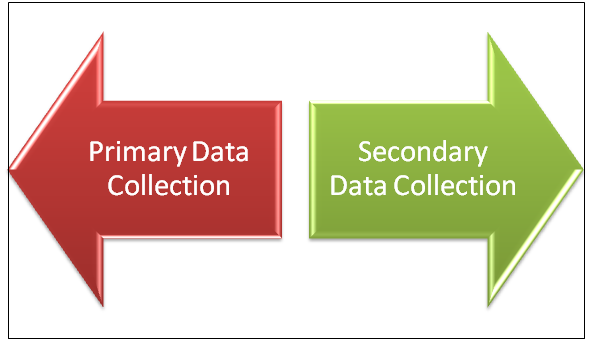
Figure 3.1: Research Method
(Source: Researcher)
It is important to note that Nestle comprises of an enhanced global reputation being an organisation consisting different branches in several global parts. It also produces a lot of significant goods. This research adopts both primary and secondary form of approach towards focusing on understanding if lean strategies of supply-chain for Nestle combined with resilience can help them in improving their overall supply-chain management in current marketing aspects (Birkieet al. 2017, p.125). For primary data, “qualitative data collection”through an interview, has been done through marking ease of communications with officials from Nestle, to obtain potential data and information regarding their supply-chain strategies. After collection of potential secondary data and information, the research method focused on marking a detailed presentation on issues, which Nestle has been facing during COVID-19 pandemic situation. It also delivers understanding of different strategies that Nestle has adopted for overcoming the challenges for reducing their financial losses.
3.2 Research Design
Present research implements “Exploratory Research design”, for generating, a well analysed and examined research, which is beneficial towards bringing out best possible research consequences. It is significant to note that this type of research design helps this research in potentially serving as an appropriate tool for their initial research and providing a theoretical ideology of the research problem (Dabhilkaret al. 2016, p.45).This ideal design helped the researcher towards gaining a lot of flexibility in terms of adapting to different changes as per progress of the research.
It also helped in laying research foundation and marks better scopes for further future researches. It helped this research to formulate potential issues while concentrating solely on clarifying concepts and bringing out an adequate overall research outcomes. It helped in gaining familiarity with different types of strategies used in supply-chain with an existing phenomenon while concentrating on acquiring a very new insight into the overall research for forming into a more precise kind of problem.
3.3 Data Collection Method and Sampling
This research has incorporated both “Secondary and Primary”, data collection method for bringing out a thorough understanding of the research context. It is essential to note that, it helped in understanding comparison and contraction between primary qualitative and secondary qualitative form of results as well as findings of the research (Nunhokeeet al. 2020, p.4).It helps in being persuasive as well as rigorous in terms of analysing both procedures of primary as well as secondary form of methods. Primary method”, has been implemented and carried out in the research that assures an in-depth form of analysis of data and information for bringing out best possible research delivery. “Secondary data”, on the other hand enhances collection of potential information from best databases and utilising previous researches to extend the region of the present research in current marketing aspects (Stevenson and Cole, 2018).
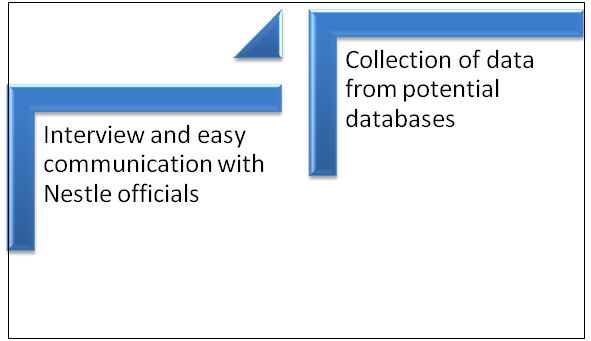
Figure 3.2: Data Collection
(Source: Researcher)
It is significant to note that primary research enabled interviewing officials from Nestle and communicating with them for understanding disruptions of supply-chain in Nestle. It enabled to communicate with high officials of Nestle such as “David Neighbour”, that happens to be “Supply Chain Efficiencies Manager (SCEM)”, in the organisation to understand overarching lean strategies or processes that are employed by Nestle prior to COVID-19 pandemic period (Ryan et al. 2020). Apart from this, different questions have been asked through open-ended interview with Nestle officials for bringing out best understanding of strategies of supply-chain in Nestle. ‘Secondary research’ has also be conducted alongside “primary research”, that involved data bases from different peer-reviewed platforms, which extended the researcher’s insight towards understanding supply-chain strategies and economic performance measures in current marketing aspects (Martins et al. 2018, p. 4).
Sampling has been done in accordance with “Non-probability”, form of sampling, which assured selection of the right officials that are related to supply-chain department of Nestle, such as David Neighbour (SCEM) of Nestle for bringing out authorised an genuine information (Ochôaet al. 2019, p. 2340).Regarding “Secondary research”, different best database platform such as Pro-Quest, Factiva, Google-Scholar, SpringerLink as well as other renowned platforms such as ScienceDirect and Wiley library has been utilised for finding and analysing existing researches on similar research context, for bringing out best possible research delivery.
3.4 Data Analysis and Justification of Primary and Secondary sources
The data collected from interview is divided into seven different regions. These regions are segmented into different questions, that are interviewed with the officials of Nestle and primary data is obtained. It is then collected and interpreted suitably with only subjective bias and no alteration of any form of meaning, therefore not tampering with the originality of the collected data and information
Apart from the “Primary data”, the “Secondary Data”, is obtained through a detailed analysis of the existing researches about lean and resilient supply-chain strategies (Johnston, 2017). The collected data is suitably analysed into potential ‘themes’, that is clustered together for bringing out a best possible understanding of the context. It ensured the research to obtain a flexible form of approach for assuring suitable interpretation of the existing research context from their potential data set (Carroll et al. 2017, p. 124). It enhances segmentation, potential categorisation along with summarisation of data and information for inclining it to the research topic and bringing out best possible outcomes.
3.5 Alignment with Case discussion
It is critical to note that Nestle, Australia has been selected as a case study for this research. It comprise of different global branches in different parts of world along with producing a lot of different items and goods. It has been chosen as it has been subjected towards severe form of disruptions during COVID-19 pandemic period. Analysis of supply-chain management of Nestle helped in understanding their lean and resilient strategies during the time of disruption due to pandemic situation. It has been highly practical approach of this research to understand lean and resilient supply-chain strategies and its influences over core and external factors within organisational standards during major disruption in trade and environment (Von Benzon, 2019, p. 183).
Analysing secondary data gives this research potential understanding of the synergies between lean as well as resilience supply-chain strategies. Whereas, the first hand “Primary Data”, enabled in communicating openly with the major supply-chain officials of the organisation for understanding the impact of these strategies into their overall business functions such as core market share along with financial assets of the organisation (Aranda et al. 2018, p. 224).A clear understanding related to different risk-management strategies towards supply-chain is also analysed, that is utilised extensively through Nestle for maintaining their overall business sales as well as market share in Australia.
3.6 Ethical Considerations
This research has incorporated potential “ethics”, for assuring maintenance of research compliance. It further includes enhancing voluntary participation of the research officials (participants) while taking consultation from them prior to research. It enables maintenance of absolute honesty along with integrity attributes (Von Benzon, 2019, p. 184). Furthermore, it also involves maintaining data-protection and security and ensuring confidentiality along with potential anonymity of the resources and participants involved. Furthermore, it maintains legal compliance standards of research conduction in Australia and assures no tampering or mishandling of data and information.
4. Findings and Discussion
4.1 Data analysis (Primary Data)
Firstly, this research analyses responses from the participants, who have been interviewed in the “Primary data collection”, process for bringing out best possible research delivery. In this concern, it involves understanding about transportation system, which are utilised by Nestle for their supply-chain management during disruption by pandemic situation. There has been very little disruption in terms of trucks and railways. However, shipping container shortages at different US ports has further lead to delay of their service delivery (Xu, 2020, p.8). Global shipping rates have further increased circa 300% since three months, therefore negatively influencing total delivery expenses (Núñez-Merino et al. 2020, p.5036). Primary issues has resulted to global flight shortages and reduced airfreight, which resulted in substantial form of delays in delivery of goods.
Nestle has been subjected to import form of shipping delays along with ocean freight pricing. This has resulted in difficulties towards managing any additional form of inventories at further expenses. However, they have improved reporting along with visibility related to “ocean freight carriers”, for getting real-time daily reports of actuals and marked better transport coordination in Australian market (Caddenet al. 2021, p.28). As Nestlé official such as David Neighbour (SCEM) reveals there lean strategies, it became easier to analyse their process employed prior to the COVID-19 pandemic situation regarding their effective supply-chain management aspects.
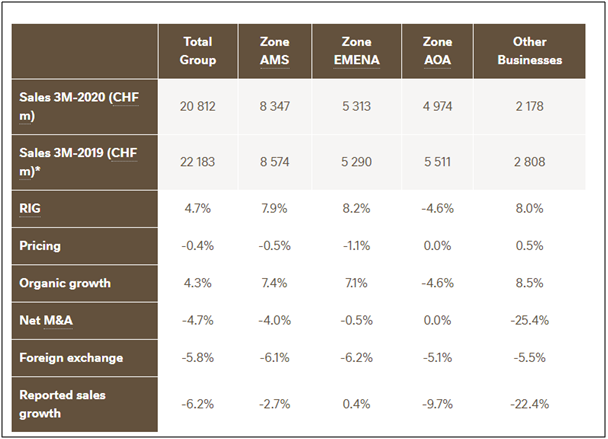
Figure 4.1: Sales decline in pandemic period for Nestle
(Source: Nestle.com, 2021)
Nestlé’s lean strategic approaches involved sourcing of raw and pack materials through centralised procurement groups, while driving scale economies and assuring best possible “Factory Manufacturing Initiatives”, within the organisational standard (Zhu et al. 2020, p. 5858). It enhanced lean initiatives in factories for eradicating waste and marking better machine reliability towards potentially driving up best asset utilisation along with proper outputs. According to “David Neighbour”, SCEM of Nestle, they indulge in utilising consumer data and information as a potential source associated with truth related to demand sales along with marking analytical planning for progressing with “Demand Plan Accuracy” permitting a reduction in potential stock policy in turn towards mitigating amount of proper inventory. Nestle ensures reduction of proper overhead expenses along with streamlining potential consumer needs and proper inventory-management operations within organisational standards (Ghadgeet al. 2020, p.18).It has contributed towards centralisation associated with best possible standards of transport coordination and potential management. “Master production Scheduling”, centralisation has been done for optimising best possible standards of optimising stock policies.
Through analysing “Primary data”, it has been found that lean strategies in supply-chain further works in a perfect manner through marking absence of potential disruptions and assuming that market remains constant over time. When asked regarding different actions along with strategies, that is taken by Nestle for securing alternative suppliers, official answers that they set a global target in terms of local procurement groups for obtaining alternative form of sourcing (Werner et al. 2021, p.60 ). Each market team or the project lead engages specialist buyer for finding along with committing to volumes with alternate form of suppliers towards specification of products. Around 50% of new portions have been international alternate form of suppliers during pandemic period. Nearly 65% of new suppliers to Australian market have been implemented and some of the older form of suppliers has been further re-instated. The commodity price has increased nearly between 80 and 160% and average commodity will be nearly 100%.
Nestle officials stated that their customers are not happy with their delivery and service; however, during pandemic situation the condition for their competitors, remains somewhat at an equal position. Therefore, they are not at any form of risks related to share loss. However, Nestle has been subjected towards financial risks and increase of their additional expenses and complexities, which they require to manage effectively. Therefore, it can be argued that they can sustain a better resilient supply –chain for being able to take advantage over their competitors in this circumstance. They have been also establishing a more economical manner of developing better resilience through driving further expense optimisation at internal grounds regardless of passing it to other consumers. Although during initial point of interview it was clear that Nestlé’s lean management in supply-chain was doing well in terms of waste mitigation and runtime progress; however, “Asset Intensity (AI)’, focus was mitigated as a part of availability becoming a primary form of driver implying longer form of manufacturing runs along with lot sizes, which needed to be sacrificed.
4.2 Significance to practice and knowledge
Resilient strategies were preferred more over “lean strategies”, that helped business to rationalise few SKU ranging, that is to permit prolonged manufacturing runs while simplifying potential supply (Alkan and Seran, 2016, p. 45). Resilient strategies involved increase of safety stock standards with reliability of ocean freight, thereby offsetting lean inventories that have been historically maintained. “SKU rationalisation program”, further helped in boosting short-term outputs , that also helped in rebuilding stock on ‘primary sku’, at a quicker pace that it was initially planned by Nestle (Babaeinesamiet al. 2021, p. 20). Alternate sourcing also improved ability towards getting required materials while fulfilling manufacturing needs. According to the response from interview, Nestle can sustain a more resilient form of supply-chain for being able to take advantage over their competitors in disruptive circumstances, such as the pandemic. Although lean-management have been effective prior to pandemic situation, Nestlé’s official thinks that they will not completely go back to their initial lean-management to supply-chain
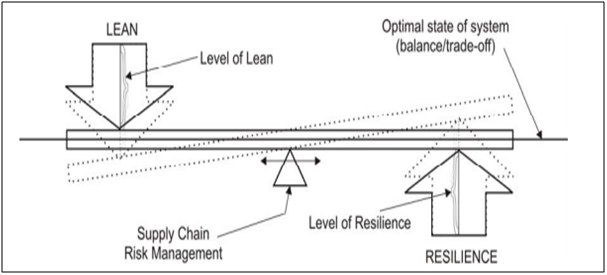
Figure 4.2: Optimal association between lean and resilience
(Source: Maslaricet al. 2013)
Nestle, is further looking towards sustaining a more and potential resilient form of supply-chain for finding an appropriate way towards optimising their business process. It will be further completed through assessing each region risks along with analysing business scope through every product as well as market category (Birkieet al. 2017, p. 30).Nestle will be open towards improving their service along with optimising costs; however the response from interview clearly states that Nestle would not go back in operating as lean as they once did during pre-pandemic situations (Nechoet al. 2021, p. 205).Nevertheless, Nestle would also optimise business expenses in spite of adopting strategies that are more resilient and will look upon to mitigate waste in every region. It is found that although resilient supply-chain benefitted Nestle, they have been trying to adopt a mixed lean and resilient supply-chain strategy that will help in contributing effectively to the business during major disruptions.
4.3 Discussion- Synthesis of Primary and Secondary Data
According to (Kovacs and Silagala, 2021), lean supply-chain strategy is high effective and efficient during times of no disruptions, which is highly exposed towards different risks, at the time of occurrence of potentially unexpected disruptions. In this concern, it can be compare to the study of Nestle, where it has been found that lean-strategy of their supply-chain was not effective in many regions during pandemic situation. Other research by (Ruiz-Benitez et al. 2018, p. 15), clearly illustrates that lean strategies can be a potential reason towards progressing on overall resilient operations associated with supply-chain. It is because of this attribute helps in resulting in an increased consumer satisfaction, which is further measured through extent which orders are further fulfilled timely.
According to Birkie (2016), organisations can utilise operational resilience towards analysing risks towards business operating in disruptive environment. In this concern, resilience capabilities are broadly discussed to help organisations to recuperate potential performance that is affected through supply-chain disruption. Lean strategy involves a proper synergy influence through setting up a potential time-driven form of system, combining different form of operational process. Lean strategy reports in proper combination of supporting direct involvement of controller with supply, manufacturing as well as marketing and research development process within potential organisational standards. Birkie (2016), further states that most lean practices can potentially help in increasing resilience towards unexpected form of disruptions. Therefore a higher standard of lean-strategy can lead to a much better form of proper recovery time; therefore to assure higher resilience within the system in an organisational standards. Comparing primary and secondary form of data that have been collected in this research assures illustration of potential contribution associated with identifying if Nestle should abandon their lean-supply-chains strategy. It is evident that lean and resilience strategy is complementary to each other and can work together in a potential manner for enhancing finding of the correct source and reducing overall time. Therefore, increasing potential resilience strategy during lean strategy being high will comprise of a high form of incremental influence on performance.
4.4 Study limitations
This research, like all other researches, is subjected towards certain limitations, which will be discussed in this section. First limitation to this research is that only one potential company, that is Nestle, Australia has been consulted and utilised for data collection process, that limits its research area. Secondly, this research has been limited to the time constrains. Only 9 weeks has been allotted for this research, which might cut out possible potential of a more detailed analysis of the outcomes, therefore limiting the research consequences. ?
5. Conclusion and Recommendations
5.1 Conclusion of Research
This research has enhanced implementation of suitable literature to bring out proper synergy and conflict between lean as well as resilient strategy associated with supply-chain in Nestle. It has incorporated both primary as well as potential secondary research, comparing and collaborating the same for bringing out best possible research outcomes. It can be concluded that to some extent strategy related to lean as well as resilience can further work together in terms of raising performance indicators of supply-chain management in Nestle. Additionally, if there lies any kind of major disruption related to supply-chain, the companies,that practices adequate form of strategies, that involves both lean and resilience synergy will find themselves fully prepared with necessary abilities for facing challenges and disruptions in shortest possible times. This research helps in illustrating a potential framework towards establishing a proper synergy between resilience strategy as well as lean strategy that can help with assuring best possible supply-chain management during any probable disruption circumstances.
5.2 Recommendations
After analysing the research topic and bringing out suitable outcomes, this research recommends incorporating correct strategies, for assuring adoption of both lean and resilient strategies to a certain extent by companies like Nestle to be prepared with its organisational and supply-chain capabilities for facing any disruption challenges (Birkie, 2018). It will include logistics managers for being aware of the problem and carry out an effective supply-chain-risk management while looking more seriously towards vulnerability along with resilience in terms of supply-chain. It is also recommended to enable utilisation of “Supply-Chain Risk Management”, by large organisations, such as Nestle for assessing trade-off between resilience along with lean strategy.
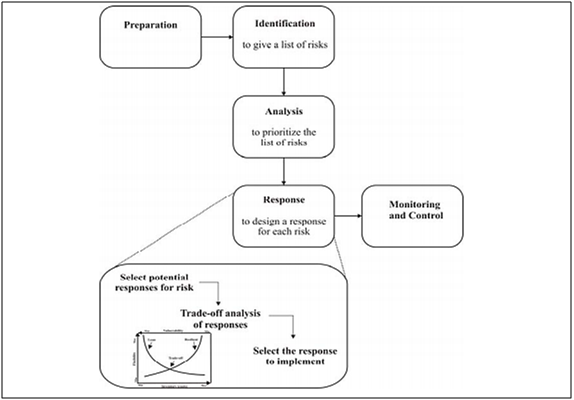
Figure 5.1: SCRM model recommended for collaboration of lean and resilience strategy
(Source: Maslaricet al. 2013)
Preparation will come with identification of potential risks, following a proper detailed analysis for prioritising the same. A response will enhance designing response for each risk category, asserting potential monitoring and control system (Maslaricet al. 2013, p. 230). Therefore, creating new kind of trade-offs between lean principles such as cost savings and resilient principles as if robustness is necessary for operating in any kind of disruptions. It is also recommended for worldwide brands like Nestle, which enhances supplies from different parts of the world to assure a full form of understanding related to collaboration of lean along with resilient strategies, which will help in developing more efficient as well as less vulnerable form of supply-chain management within organisational standards.
5.3 Opportunities for Further Research
This research analyses potential gap of existing literature regarding the context of synergies as well as conflicts between lean and resilient form of supply-chain strategy within potential organisational context. It involves both primary as well as proper secondary data and brings out a suitable bias, with proper interpretation of qualitative data and information. It is essential to note that, future researches will be benefitted through reliable and authentic data, which has been implemented in this research. This research has studied conflicts as well as potential synergies of lean and resilient strategy; therefore, future upcoming researches can study a different perspective of the similar research context.
Reference List
Aranda, D.A., Menéndez, J.F., Real, J.C., Benítez, R.R. and Vargas, C.L., 2018.Gestión de inventarios con demandaindependiente y líneas de espera. In Dirección de la producción y operaciones: decisionesoperativas (pp. 223-292). Pirámide.
Babaeinesami, A., Tohidi, H. and Seyedaliakbar, S.M., 2021. Designing a data-driven leagile sustainable closed-loop supply chain network. International Journal of Management Science and Engineering Management, 16(1), pp.14-26.
Birkie, S.E. and Trucco, P., 2020. Do not expect others do what you should! Supply chain complexity and mitigation of the ripple effect of disruptions. International Journal of Logistics Management.12(2), pp.10-36.
Birkie, S.E., 2016. Operational resilience and lean: in search of synergies and trade-offs. Journal of Manufacturing Technology Management. 2(2), pp.20-45 Birkie, S.E., 2018. Exploring business model innovation for sustainable production: lessons from Swedish manufacturers. Procedia Manufacturing, 25, pp.247-254.
Birkie, S.E., Trucco, P. and Campos, P.F., 2017. Effectiveness of resilience capabilities in mitigating disruptions: leveraging on supply chain structural complexity. Supply Chain Management: An International Journal.19(4), p.e125. Birkie, S.E., Trucco, P. and Kaulio, M., 2017.Sustaining performance under operational turbulence: the role of lean in engineer-to-order operations. International Journal of Lean Six Sigma.10(2), p.p12-15.
Cadden, T., Dennehy, D., Mantymaki, M. and Treacy, R., 2021.Understanding the influential and mediating role of cultural enablers of AI integration to supply chain. International Journal of Production Research, pp.1-29.
Carroll, J.K., Moorhead, A., Bond, R., LeBlanc, W.G., Petrella, R.J. and Fiscella, K., 2017. Who uses mobile phone health apps and does use matter? A secondary data analytics approach. Journal of medical Internet research, 19(4), p.e125.
Dabhilkar, M., Birkie, S.E. and Kaulio, M., 2016. Supply-side resilience as practice bundles: a critical incident study. International Journal of Operations & Production Management.3(1)pp.41-49.
De Moura, D.A. and Botter, R.C., 2017. Toyota production system-one example to shipbuilding industry. Independent Journal of Management & Production, 8(3), pp.874-897.
Ghadge, A., Kara, M.E., Moradlou, H. and Goswami, M., 2020.The impact of Industry 4.0 implementation on supply chains. Journal of Manufacturing Technology Management 2 (1) pp.1-19
Ivanov, D., Sokolov, B. and Dolgui, A. 2014, The Ripple effect in supply chains: trade-off ‘efficiency-flexibility-resilience’ in disruption management, International Journal of Production Research, 52 (7), pp. 2154-2172.
Johnston, M.P., 2017. Secondary data analysis: A method of which the time has come. Qualitative and quantitative methods in libraries, 3(3), pp.619-626.
Kovács, G. and FalagaraSigala, I., 2021. Lessons learned from humanitarian logistics to manage supply chain disruptions. Journal of Supply Chain Management, 57(1), pp.41-49. Martins, F.S., da Cunha, J.A.C. and Serra, F.A.R., 2018.Secondary data in research–uses and opportunities. PODIUM sport, leisure and tourism review, 7(3).
Maslaric, M., Backalic, T., Nikolicic, S. and Mircetic, D., 2013.Assessing the trade-off between lean and resilience through supply chain risk management. International Journal of Industrial Engineering and Management, 4(4), pp.229-236. Necho, M., Tsehay, M., Birkie, M., Biset, G. and Tadesse, E., 2021. Prevalence of anxiety, depression, and psychological distress among the general population during the COVID-19 pandemic: A systematic review and meta-analysis. International Journal of Social Psychiatry, p.00207640211003121. Nestle.com, 2021, All press releases, Viewed on 27/07/2021 from https://www.nestle.com/media/pressreleases/allpressreleases/three-month-sales-2020
Núñez-Merino, M., Maqueira-Marín, J.M., Moyano-Fuentes, J. and Martínez-Jurado, P.J., 2020. Information and digital technologies of Industry 4.0 and Lean supply chain management: a systematic literature review. International Journal of Production Research, 58(16), pp.5034-5061.
Nunhokee, C.D., Parsons, A.R., Kern, N.S., Nikolic, B., Pober, J.C., Bernardi, G., Carilli, C.L., Abdurashidova, Z., Aguirre, J.E., Alexander, P. and Ali, Z.S., 2020. Measuring HERA's Primary Beam in Situ: Methodology and First Results.Business research assignment The Astrophysical Journal, 897(1), p.5.
Ochôa, P., Groves, R.M. and Benedictus, R., 2019. Systematic multiparameter design methodology for an ultrasonic health monitoring system for full?scale composite aircraft primary structures. Structural Control and Health Monitoring, 26(5), p.e2340.
Ponomarov, S.Y. and Holcomb, M.C. 2009, Understanding the concept of supply chain resilience, The International Journal of Logistics Management, Vol. 20 No. 1, pp. 124-143.
Ruiz-Benítez, R., López, C. and Real, J.C., 2018.The lean and resilient management of the supply chain and its impact on performance. International Journal of Production Economics, 203, pp.190-202.
Ryan, E.H., Joseph, D.P., Ryan, C.M., Forbes, N.J., Yonekawa, Y., Mittra, R.A., Parke, D.W., Ringeisen, A., Emerson, G.G., Shah, G.K. and Blinder, K.J., 2020. Primary retinal detachment outcomes study: methodology and overall outcomes—Primary Retinal Detachment Outcomes Study Report Number 1. Ophthalmology Retina, 4(8), pp.814-822.
Stevenson, M. and Cole, R., 2018. Modern slavery in supply chains: a secondary data analysis of detection, remediation and disclosure. Supply Chain Management: An International Journal.pp.19-22.
Taleb, N.N., Goldstein, D.G. and Spitznagel, M.W. 2009, The six mistakes executives make in risk management, Harvard Busines Review, Vol. 87 No. 10, pp. 1-6. Von Benzon, N., 2019. Informed consent and secondary data: Reflections on the use of mothers’ blogs in social media research. Area, 51(1), pp.182-189.
Werner, M.J.E., Yamada, A.P.L., Domingos, E.G.N., Leite, L.R. and Pereira, C.R., 2021. Exploring organizational resilience through key performance indicators. Journal of Industrial and Production Engineering, 38(1), pp.51-65. Woods, D.D. (2006), “Essential characteristics of resilience”, in Hollnagel, E., Woods, D.D. and Leveson, N. (Eds), Resilience Engineering: Concepts and Percepts, Ashgate, Burlington, VT, pp. 22-33
Xu, H., 2020. Minimizing the ripple effect caused by operational risks in a make-to-order supply chain. International Journal of Physical Distribution & Logistics Management.2 (1), p 5-10
Zhu, G., Chou, M.C. and Tsai, C.W., 2020. Lessons learned from the COVID-19 pandemic exposing the shortcomings of current supply chain operations: A long-term prescriptive offering. Sustainability, 12(14), p.5858.












